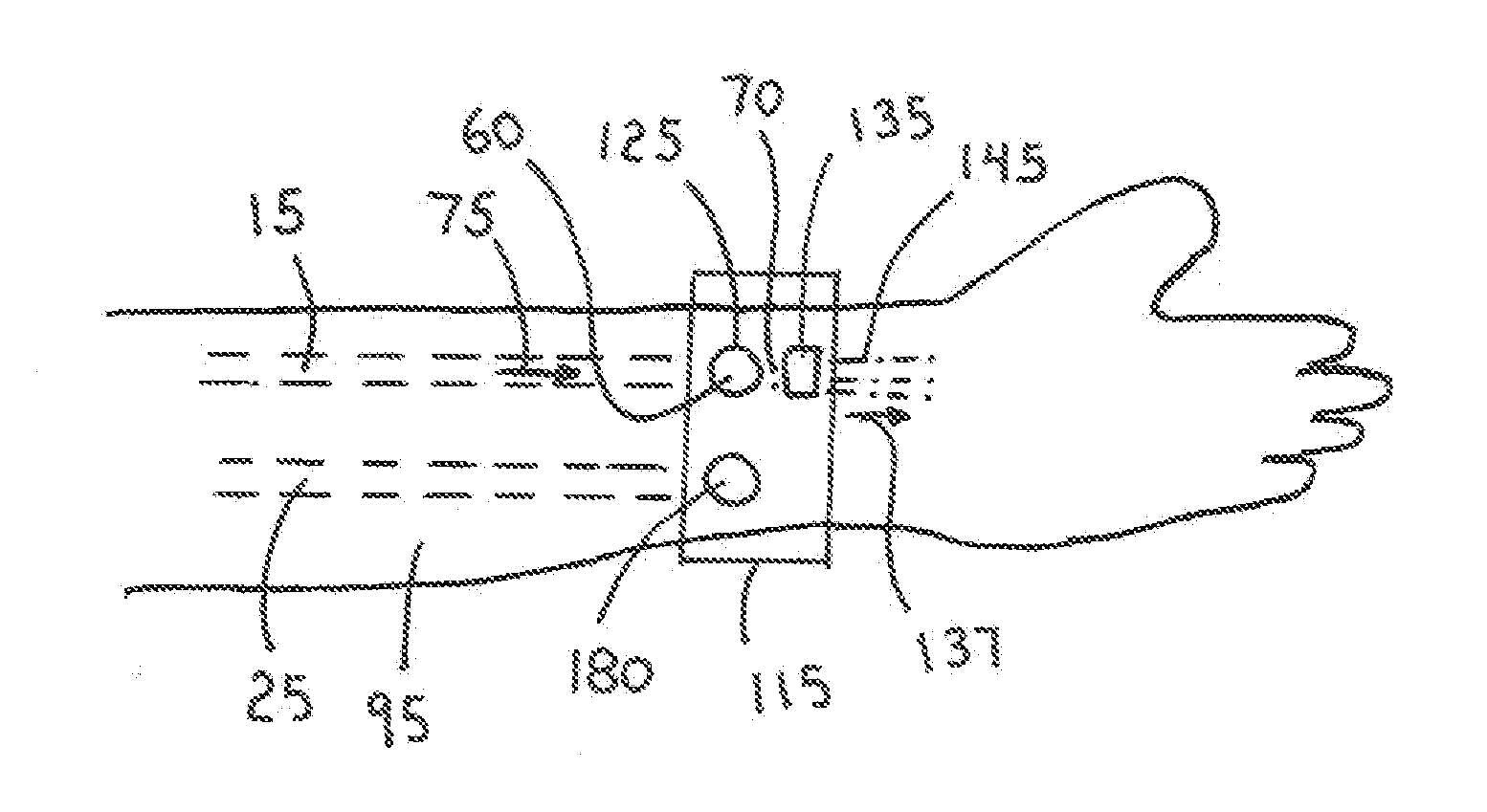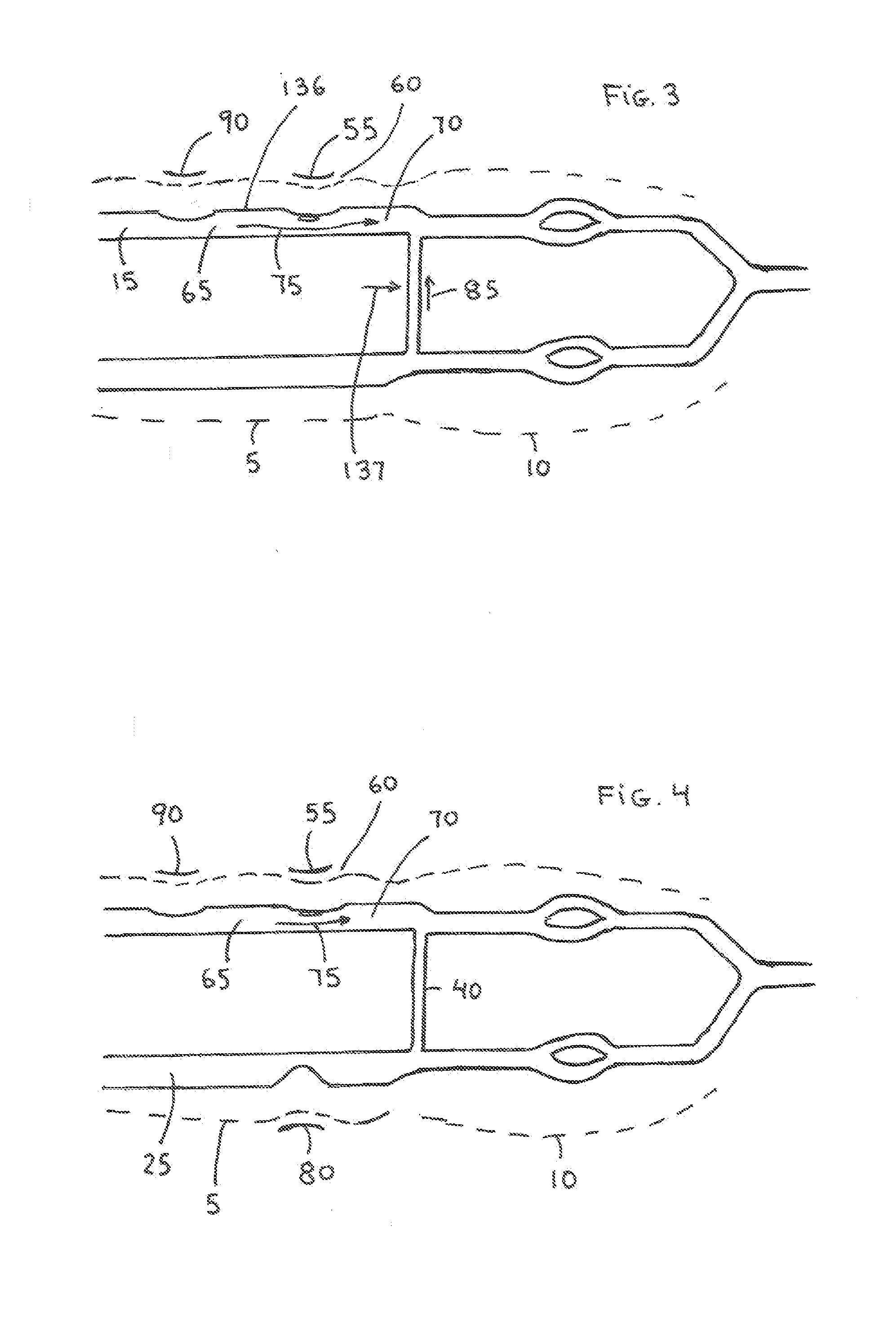Radial Artery Closure Device
a technology of radial artery and artery, applied in the field of radial artery closure device, can solve the problems of preventing a repeat procedure, affecting the healing effect of patients, so as to achieve hemostasis, reduce radial pressure, and less force
- Summary
- Abstract
- Description
- Claims
- Application Information
AI Technical Summary
Benefits of technology
Problems solved by technology
Method used
Image
Examples
Embodiment Construction
[0041]The vasculature of the forearm (5) and hand (10) can be modeled for our use as shown in FIG. 1. The radial artery (15) runs along the forearm (5) on the lateral side (20) (thumb side) and the ulnar artery (25) runs along the medial side (30) of forearm (5) delivering blood to forearm (5) tissues and the hand (10). At the wrist level (35) and in hand (10) region there are collateral arteries (40) that connect the radial artery (15) with the ulnar artery (25); these collateral arteries (40) include the palmar carpal branch, the dorsal carpal arch, the superficial palmar arch, and the deep palmar arch. These collateral arteries (40) are modeled in FIG. 1 as a single collateral artery (40). If the radial artery (15) were to become totally occluded, blood would be supplied to the hand (10) via the ulnar artery (25). Arterial blood reaching the hand (10) is then directed through capillaries (45) and into the venous system (50). As shown in FIG. 1 a compression surface (55) has been ...
PUM
 Login to View More
Login to View More Abstract
Description
Claims
Application Information
 Login to View More
Login to View More - R&D
- Intellectual Property
- Life Sciences
- Materials
- Tech Scout
- Unparalleled Data Quality
- Higher Quality Content
- 60% Fewer Hallucinations
Browse by: Latest US Patents, China's latest patents, Technical Efficacy Thesaurus, Application Domain, Technology Topic, Popular Technical Reports.
© 2025 PatSnap. All rights reserved.Legal|Privacy policy|Modern Slavery Act Transparency Statement|Sitemap|About US| Contact US: help@patsnap.com



